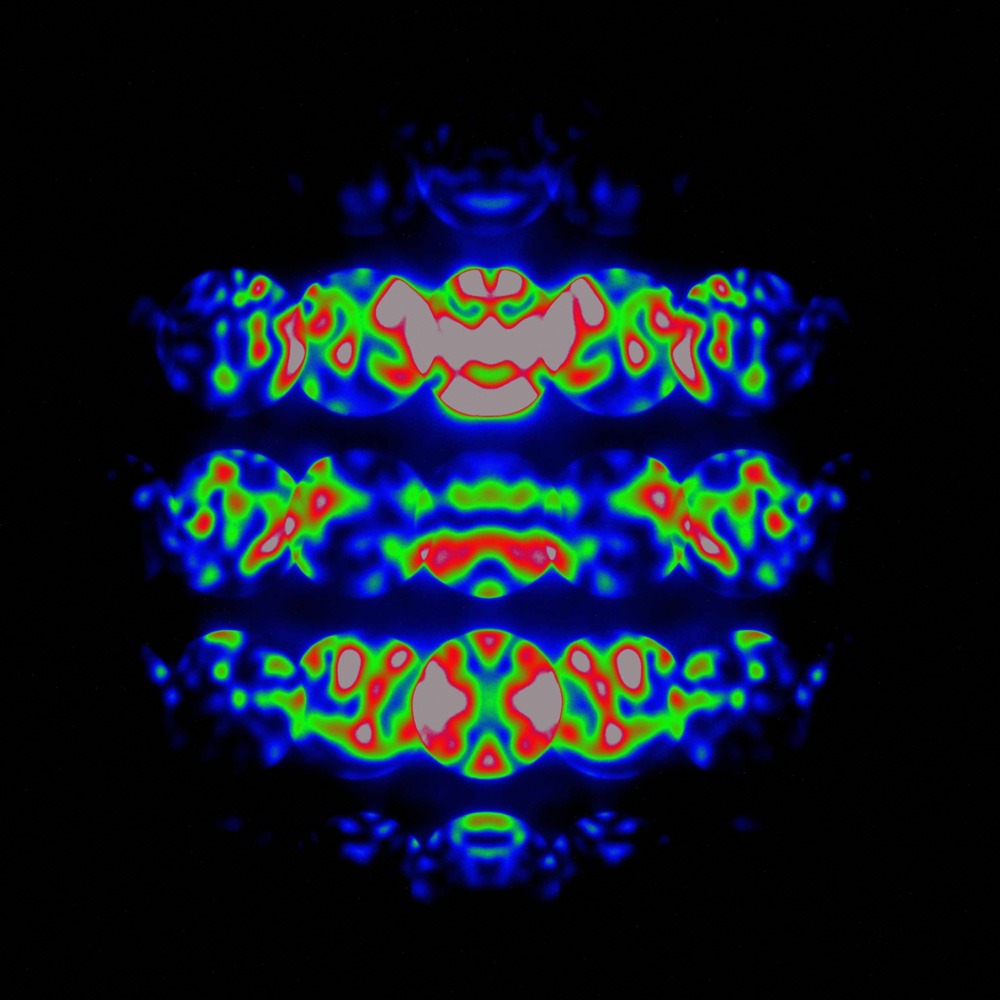Vaccine patch
Electron diffraction pattern from a crystal of strontium titanate in an electric field, showing information about electrical potential. This contributes to the development of better capacitors for all sorts of electronic devices.
Visualised using quantitative convergent beam electron diffraction by Prof. Andrew Johnson, University of Western Australia.
Key: highest signal intensity is in grey, then through red and green to the lowest in blue.
Theories about how materials like strontium titanate (a dielectric) will behave don’t work well when the material is in an electric field. Dielectrics are crucial in capacitors, which in turn, are used in almost all electrical and electronic goods. Knowing how dialetrics function in electric fields will help scientists create better electroninc products. This image is part of an experiment that measures, extremely accurately, the changes in the distribution of electrical potential in the regions between the atoms when the crystal is in an electric field. The pattern is generated from the interaction of an electron beam with the repeating arrangement of atoms in the crystal. Scientists use the measurements to check their new theories to make sure that they do account for the real-life behaviour of the strontium titanate. If their predictions match the experimental results then their theory is good and can then be used to accurately identify the best materials for new dielectrics.
